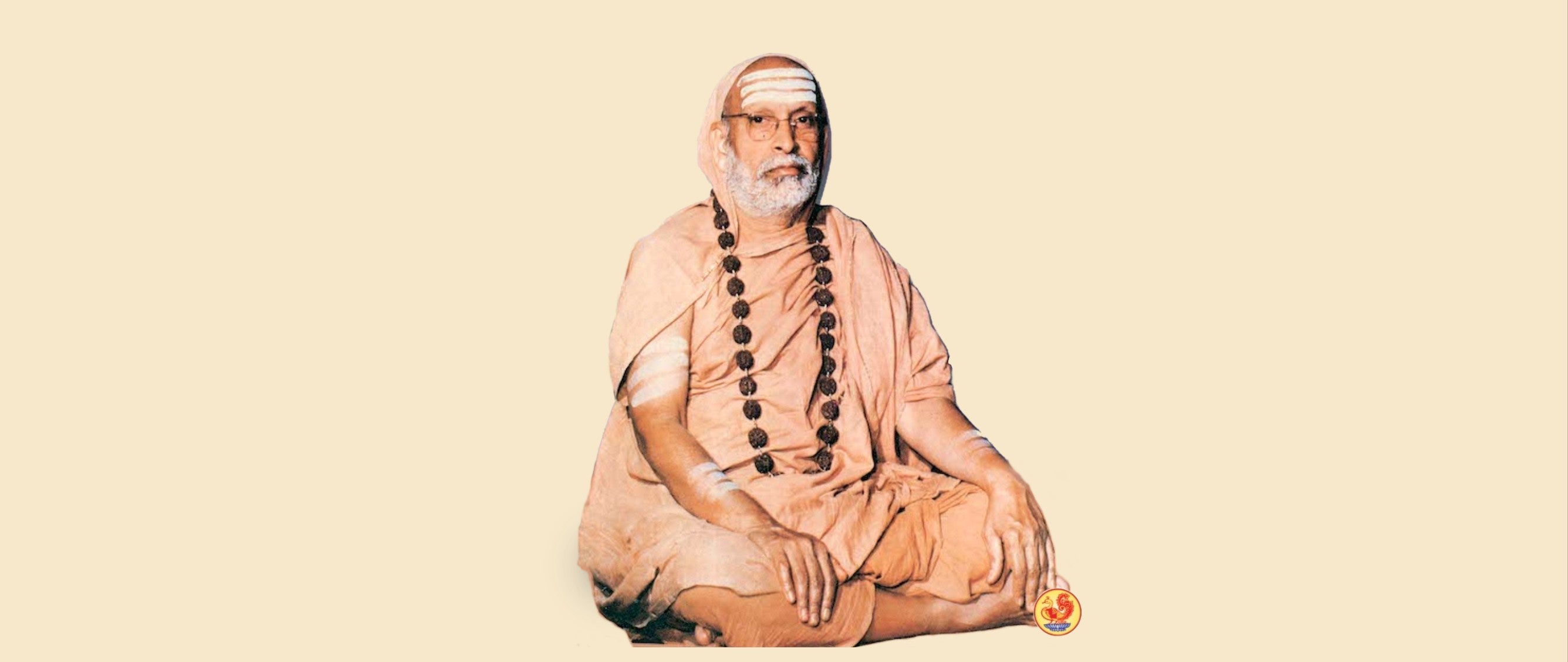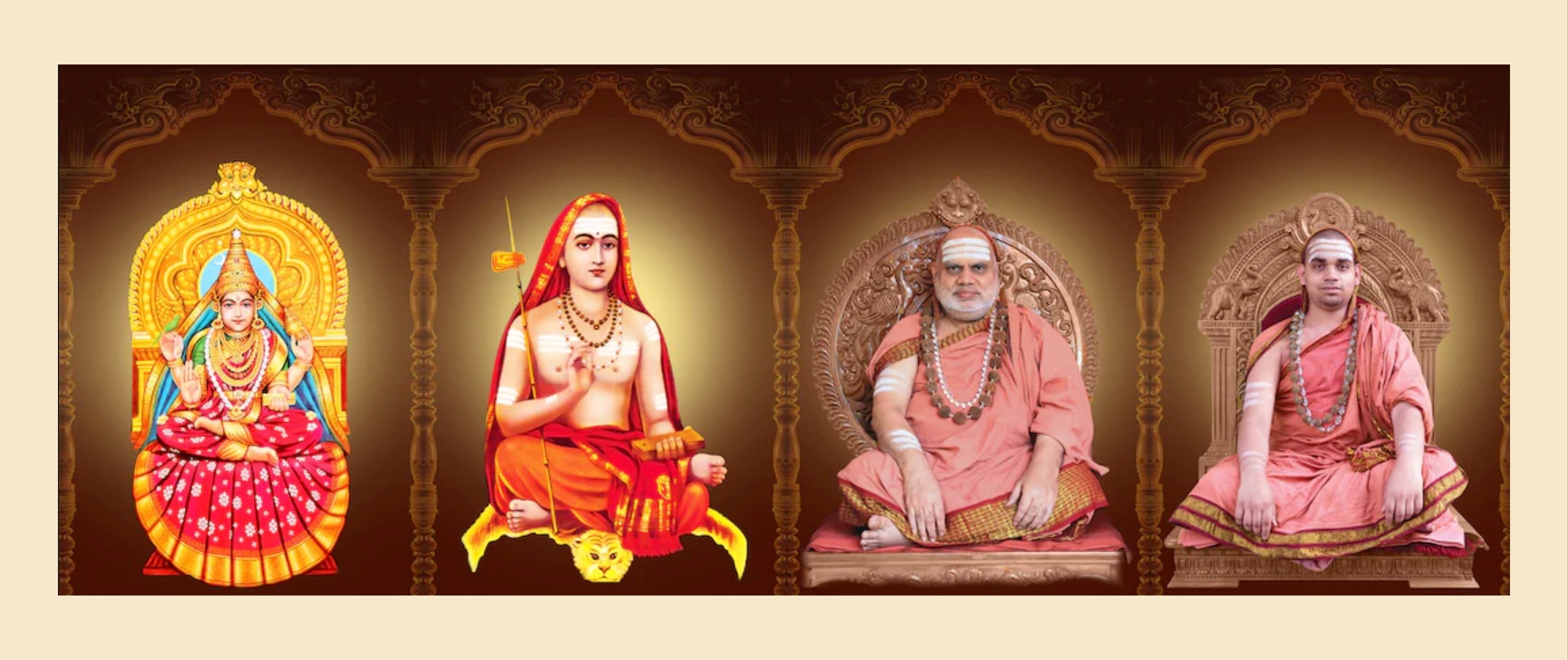Sri Chandrashekhara Bharati Mahaswamiji
Sri Chandrashekhara Bharati Mahaswamiji, revered as the 34th Jagadguru Shankaracharya of the Sringeri Sharada Peetham, was a profound spiritual leader and an embodiment of divine wisdom. His life was a testament to deep renunciation, unwavering devotion to the principles of Advaita Vedanta, and the pursuit of self-realization. Though he held the highest position of a revered lineage, he lived in utter simplicity, dedicating his life to guiding seekers on the path of truth and spiritual awakening. His teachings emphasized the importance of self-inquiry, inner purity, and devotion to the divine, inspiring countless individuals to lead lives of spiritual discipline and humility. Sri Chandrashekhara Bharati Mahaswamiji's legacy continues to illuminate the path for those seeking the ultimate truth, making him a beacon of light in the world of spiritual seekers.
Life and spiritual journey
- Early Devotion: Demonstrated deep enthusiasm for dharma and devotion to guru and God from a young age.
- Guidance by Guru: Educated by Sri Sachchidananda Sivabhinava Narasimha Bharati, achieving mastery in Sastras.
- Head of Sringeri Sharada Peetham: Became the head of Sringeri Sharada Peetham at age 20 and efficiently managed its affairs.
- Simple and Humble Life: Lived a simple life without worldly desires despite his prestigious position.
- Transformative Power: Had the ability to convert non-believers into believers with a mere glance.
- High Dispassion:Attained great dispassion and nominated his successor at the age of 40 to focus on tapas.
- Extended Puja on Narasimha Jayanti: Extended the hours of puja on Narasimha Jayanti from noon to dusk, exemplifying his devotion.
- Scholarly Achievements: Mastered Vedanta and other Shastras, displaying profound scholarship.
- Renovation of Shrines: Completed the renovation of the Sri Sharada temple and built a shrine over his guru's Samadhi.
- Withdrawal for Tapasya: Withdrew into solitude for intense tapasya, coming out occasionally to teach deserving disciples.
- Nomination of Successor: Designated Sri Abhinava Vidya Tirtha Swami as his successor in 1931.
- Limited Public Interaction: Seldom received disciples while in retirement, but a mere smile or nod from him was deeply enlightening.
- Videha Mukti: Achieved videha mukti by entering the Tunga river in 1954, with his body found in a meditative posture.
- First South India Tour: Undertook a tour of South India in 1924, visiting Mysore, Satyamangalam, Srirangam, and other regions.
- Chaturmasya Vows at Kunnakudi: Observed Chaturmasya vows at Kunnakudi during his first tour.
- Inauguration of Vedanta Course at Kaladi: Inaugurated a course in Vedanta at Kaladi and celebrated Shankara Jayanthi in 1927.
- Institution of Patashala at Nanjangud: Instituted a Patashala at Nanjangud during his first tour.
- Second Tour to Bangalore: Visited Bangalore in 1938, consecrating a shrine for Sri Sharada at the Bangalore Mutt premises.
- Sojourn in Kaladi: Stayed for ten months in Kaladi during his second tour, with support from the Maharaja of Travancore.
- Intense Tapasya and Seclusion: Gave himself up to intense tapasya and practical seclusion, focusing on spiritual practices.
Works by Sri Chandrashekhara Bharati Mahaswamiji
- Commentaries on Upanishads:
- Provided profound insights and elucidations on several Upanishads.
- Expositions on Vedanta:
- Authored detailed expositions on various Vedantic texts, enhancing understanding for scholars and devotees.
- Discourses on Dharma:
- Delivered discourses on dharma and its practical application in daily life.
- Spiritual Guidance:
- Wrote guidance on spiritual practices and the pursuit of moksha.



